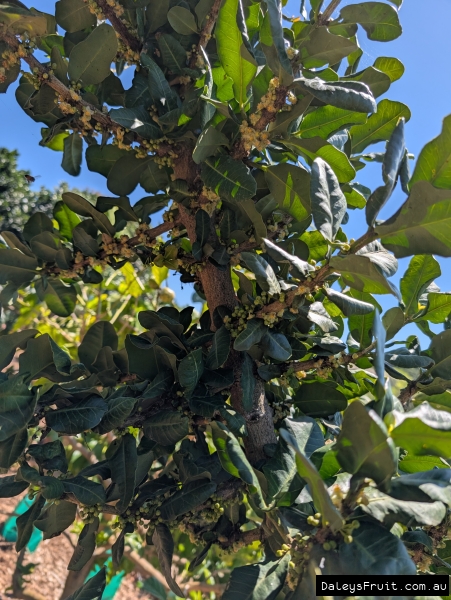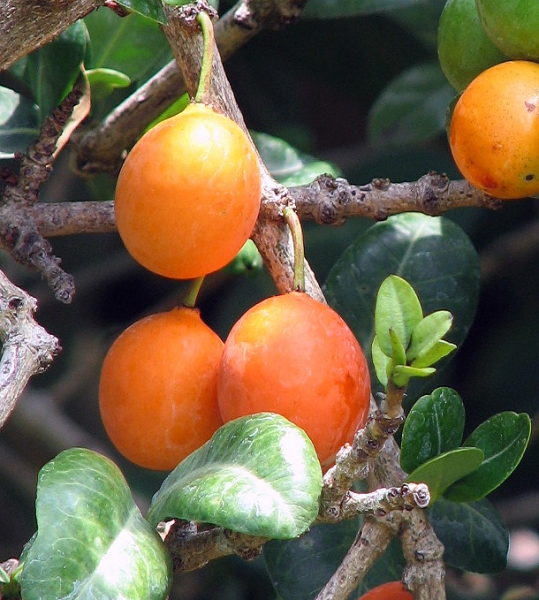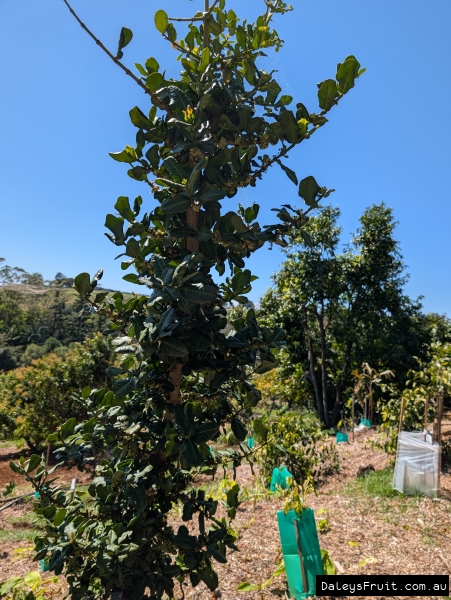
(1/6) Imbe Fruit Display showing bright orange flesh and the seed size and skin thickness when peeled
![Prolific Imbe Flowers densely covering branches]()
(2/6) Prolific Imbe Flowers densely covering branches
![Ripe fruits and foliage of Garcinia livingstonei (also called imbe)]()
(3/6) Ripe fruits and foliage of Garcinia livingstonei (also called imbe) By Christopher Hind [Wikipedia Free License, Commercial Use] (Photo Credits)
![Imbe For Sale]()
(4/6) Imbe For Sale
![Leaf of the Imbe]()
(5/6) Leaf of the Imbe
![Fruiting Imbe showing narrow growth habit]()
(6/6) Fruiting Imbe showing narrow growth habit
fullscreen1
Imbe
Garcinia livingstonei
Originating in Africa, this tree bears a small plum like fruit bright orange in colour. A thin layer of acid-sweet, watery pulp surrounds the seed. The rather tender skin tends to prevent packing and shipping of the fruit, but it deserves to be more widel... Read Morey cultivated as a home fruit. Hardy to most conditions. Dark green leathery leaves and ornamental structure make it appealing as an interesting and edible landscape plant. Grows to a bush or small tree to 4-6 m. Imbes have good salt tolerance and are also wind tolerant. Trees are dioecious, so one each of a male and female are needed for pollination and fruit set. Plant a minimum of 3 seedlings to increase the chances of having one of each. Isolated female trees will set a few small fruit parthenocarpically but the quality and size is always better with a male pollinator.
Other Names: African Mangosteen
$21.00 ($21.00-$27.00 choose a size)
Pre Order Options
Preferred Climate Tropical, Subtropical
Grown From Seedling
Max Height (when in the ground with good conditions) 2-5m
Plants required to Pollinate 3 Plants (Male and Female)
Can it Handle Frosts? Likes Temps above 5deg
Amount of leaves in Winter? All Leaves (Evergreen)
Quarantine Restrictions to these Areas WA
Water Requirements Moderate Watering
Is it a Dwarf Fruit Tree? Semi Dwarf (2/3 Normal Size)
Time to Fruit/Flower/Harvest 5+ Years
Sun or Shade Full (Sun:80%-100%)
Preferred Soil Type Good Drainage
Soil pH Moderately Acidic (5.5-6.5)
Fruiting/Harvest Months February, March, April
Create a Filter to find similar plants



































